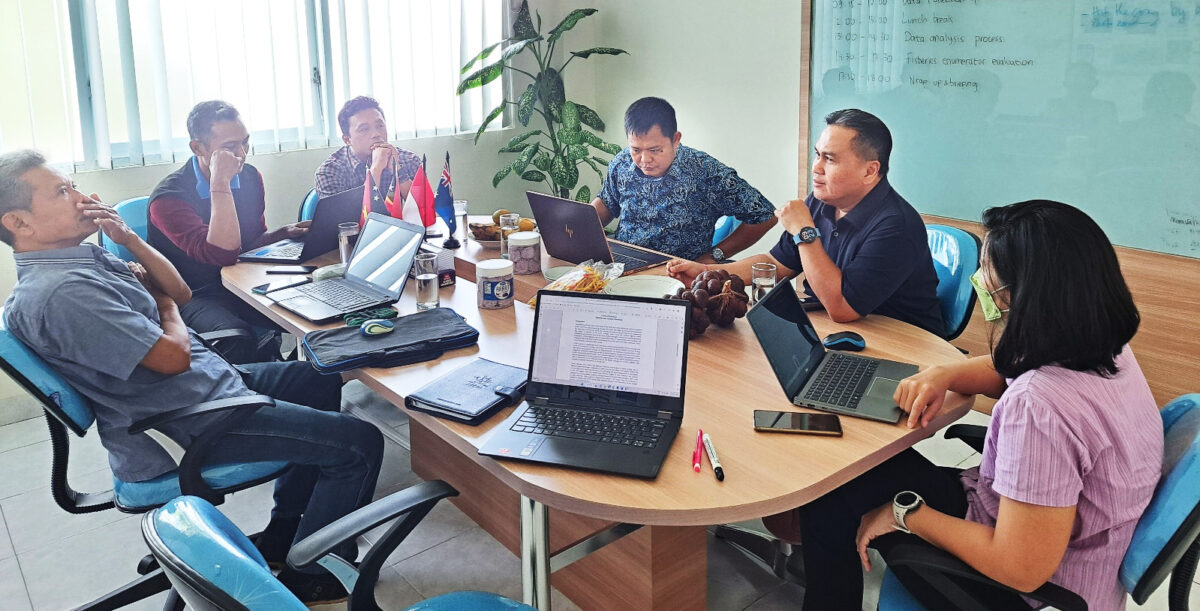Since February 2020, the ATSEA-2 Project has been working with the Centre for Fisheries Research (CFR) of the Ministry of Marine Affairs and Fisheries (MMAF) to collect daily data on red snapper in the Arafura Sea. The main species of red snapper targeted for study included Lutjanus malabaricus, Lutjanus erythropterus, Lutjanus sebae and Pristipomoides multidens. An additional type of snapper, Lutjanus johnii, was also collected. ATSEA-2 also conducted biological sampling for various analysis needs such as stock and total allowable catch (TAC) assessment.
Four enumerators were deployed in two landing sites, namely Merauke and Probolinggo, in order to collect information on daily landing data such as length and weight of fish, and also overall monthly production data. The biological sampling method used was visual observation, in order to identify sex and gonad maturity level. Data were analysed using life history estimations and Length-Based Spawning Potential Ratio (LB-SPR).
During the data collection process, the study faced a number of challenges. This included budgetary constraints for hiring fish-weighing scales (juru timbang) in Probolinggo, which resulted in enumerators having to visit individual vendors to collect data. There were also challenges in identifying the species and gonad maturity level, which were addressed by having fisheries experts review all the data submitted. Enumerator training was conducted before deployment and annual evaluations.

On 27 and 28 February 2023, enumerators from Probolinggo, a fisheries expert and Kamaluddin Kasim from the MMAF Fisheries Research Centre gathered to discuss an initial analysis of the data collected, as well as to evaluate the enumerators. The data included 5,160 observations of length and weight data for the five species of snappers. The Probolinggo site had the most snapper data, with 3,086 observations, and it was from here that the initial analysis was conducted on the Malabar data. For the biological data, 148 samples were dissected to determine their gonad maturity level. Data highlighting the other target species is currently ongoing, and will continue throughout 2023.
Using the LB-SPR and Yield per Recruit (YPR) methods, it was discovered that the average length of fish caught was 51cm. The recruitment pattern for Malabar snapper occurred in February, April, May and September. From biological sampling, it was found that the Spawning Potential Ratio (SPR) of L. malabaricus is 17%, meaning that the L. malabaricus population in the Arafura Sea is still considered to be over-exploited, hence the need to control fishing pressure. This is still an initial analysis, while the scientific paper is currently being developed.
The study has made significant progress in collecting valuable data on red snapper populations in the Arafura Sea. Data collected on TAC assessment and quota assigned for each species of fish can help to ensure these resources are managed sustainably. The study represents an important step forward in our understanding of the current state of red snapper in the Arafura Sea and could inform the development of more effective management strategies that will help to ensure the long-term sustainability of these populations.
In terms of next steps, the information collected on TAC assessment and quota assigned for each species of fish will support the MMAF program, called Quota-based Fisheries Management (Penangkapan Ikan Terukur), which helps ensure that these resources are managed sustainably.
By Deti Triani


